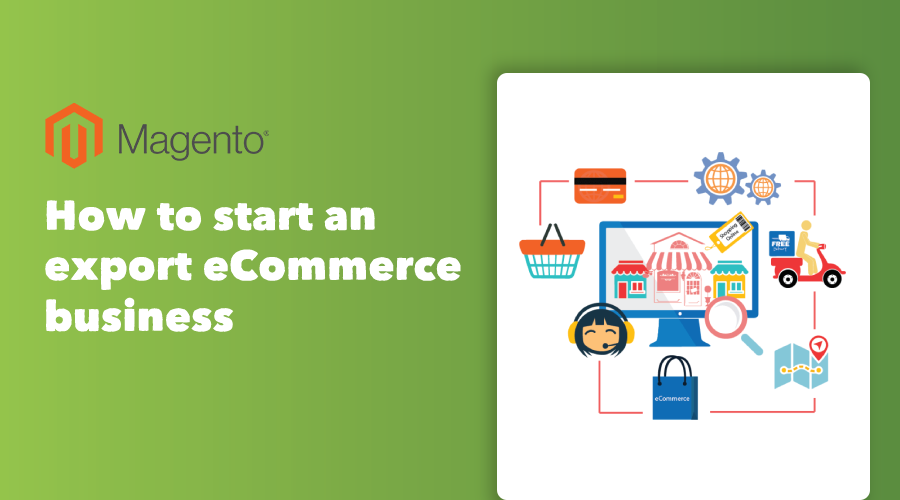
In this digital age, the help of the internet, apps, and easy traveling made organizations carrying out an export e-commerce business in other countries more simple than before. Even so, many e-commerce businesses are still unsure of how to modify operations to accommodate international sales via the internet.
Here are five measures you can do to improve your chances of making money by selling online to international customers.
Table of Contents
1. Start with the basics of an e-commerce business and work your way up
You may be an established exporter, an online merchant, or just beginning to consider the potential of internet sales. If you want to succeed in international e-commerce business, you must remember that you will be competing with the finest in the world.
To be successful, you need to ensure that your customers have a positive experience with every aspect of your business, from your branding and website design to your shipping and return policy.
2. Be a jogger, not a runner
Until you have a firm grasp of the fundamentals of running an online store, it is in your best interest to begin on a modest scale. This will allow you to iron out any flaws in your e-commerce business setup without risking your business or damaging your reputation.
You should make an effort to learn e-commerce if you have never done it before. Take it slow and focus on a handful of best-sellers that won’t break the bank to keep in stock and ship. Before going live, make sure you’ve thoroughly tested your purchasing, shipping, and return procedures. When your e-commerce platform is running smoothly, you can increase your product catalog and enter new markets.
3. Understand your audience
With fewer barriers to entry thanks to the Internet, you may potentially reach a global audience of billions. But you shouldn’t give in to the first customer who comes knocking. Choose your target markets with care so that you may maximize sales and profits. Choose a location or country where you have the highest probability of finding clients and shipping prices that are manageable.
Do some market research to learn more about what your target audience is looking for. Educate yourself about their values, shopping patterns, and desired cost. Think about changing the tone, vocabulary, and style of your website. In some cases, localization may be required to appeal to consumers in other countries. It could be as simple as changing the dimensions of the box or the text on the label. How does one’s rival perform? Would you say that their products are interchangeable? What method do they use for online sales?
4. Learn about global rules and regulations when exporting an e-commerce business
Get yourself familiarized with the regulation necessities of selling abroad. If you want to increase productivity and cut down on expenses, you should also look into various distribution mechanisms.
Duties, taxes, and/or customs fees
Study up on the fundamentals of international shipping to ensure that your products make it through customs undamaged. Put all rules and restrictions in writing in the terms and conditions.
Prices for sending packages across international borders
As you can see, your choices are numerous. Figure out when you can save money and when it’s worth it to spend more for faster service. The trick is to bargain with several shipping companies, logistics companies, and brokers.
Retailing using “drop ships”
It may be more cost-effective to “drop ship” products instead of retaining inventory and shipping them yourself, which involves sending orders and shipping details to a manufacturer or wholesaler.
5. Track your development regularly
Always keep an eye on your website’s analytics to see if users are behaving as intended. You can find out if your efforts are paying off with the help of web analytics software. Constantly monitoring and analyzing your results is a vital part of the improvement cycle you should be following: do something, see how it goes, adjust your approach as necessary, and repeat.
When considering export e-commerce business, there are seven main measures to take:
Determine how successful you could be at exporting your goods or services online.
Be sure to evaluate your present business model and inventory before committing heavily to exporting. Starting with an accurate assessment will save you time and effort down the road and will prepare you for export.
Create a strategy for exporting your products electronically
One must have an export strategy if they intend to aggressively promote their items in international markets. Create an export strategy to better handle the digital components of doing business.
Adjust your products for sale in other countries
Make sure your items can succeed in their existing form in the target market overseas before committing to exporting them. Both the local preferences and the international laws governing your items must be taken into account when expanding into new markets. Keep in mind that these will differ from country to country, thereby limiting your ability to sell your products abroad.
Look about the regulations that surround exporting
The same holds for exporting transactions as it does for any other type of commercial dealing. If you want to be sure you’re following all the rules, domestic and international, you should go to an expert who focuses on international law.
If you want to expand your business internationally, use your website as a marketing tool.
As a result of their restricted means, small and medium-sized enterprises (SMEs) rely heavily on the Internet as a sales tool. Think about creating a site that can be accessed by those who speak different languages. If you want to attract buyers in a variety of countries, each of which may speak a different language, you will need to do this.
Deliver the goods
Once a deal is made, it’s time to ship the goods to the buyer. The procedure for sending internationally can be difficult. Freight forwarders, customs brokers, and fulfillment centers are all services that can be contracted for help when sending goods internationally.
You should be paid
Set up an online payment system before the items are dispatched to avoid having to chase down payments after the fact. Payments and money transfers can be made via the Internet through a variety of online payment alternatives, such as third-party credit card processing firms, online fund transfer services, and prepaid credit services. It’s important to note that not every country supports these e-commerce businesses’ offerings.
Practical Uses and Advantages when starting an export e-commerce business

Sales, customer service, financing, market analysis, market intelligence, and product sourcing are just some of the areas where an e-commerce business may be put to use. There are many ways in which these applications can help exporters, including:
- The speed with which information regarding products and services may be sent and updated.
- Online advertising and marketing’s adaptation to changing conditions
- Customers’ Ease of Getting Their Hands On Your Goods All year round
- Quicker reactions to customer requests
- Faster and more streamlined order processing
- Easier access to data on crucial export factors like population, market profile, and rivals
- Shipping and handling costs can be reduced for some businesses by switching to the electronic distribution of their products and services.
- Better prospects to sell goods abroad thanks to exposure to international markets
Shipping, customs restrictions, and work permits are all aspects of exporting that must be handled exactly as they would be if you were conducting business without the Internet. To encourage exports, the EPCG scheme was initiated. The Indian government provides financial aid and incentives to exporters through this program. It has simplified and streamlined the process of making relationships and communicating regarding exports.
Are you prepared to start doing an e-commerce business? Before deciding to make e-commerce a broader part of your everyday operations, you should evaluate your company’s readiness for e-commerce and the potential return on investment. The next step is to formulate a strategy based on whether or not the overall impression is positive. Work out a strategy and learn the ins and outs of international e-commerce to increase your sales.











![[SALE OFF] Discount 30% All Premium Extensions On Christmas And New Year 2025 christmas-and-new-year-2025](https://landofcoder.b-cdn.net/wp-content/uploads/2024/12/christmas-and-new-year-2025-1-218x150.png)






